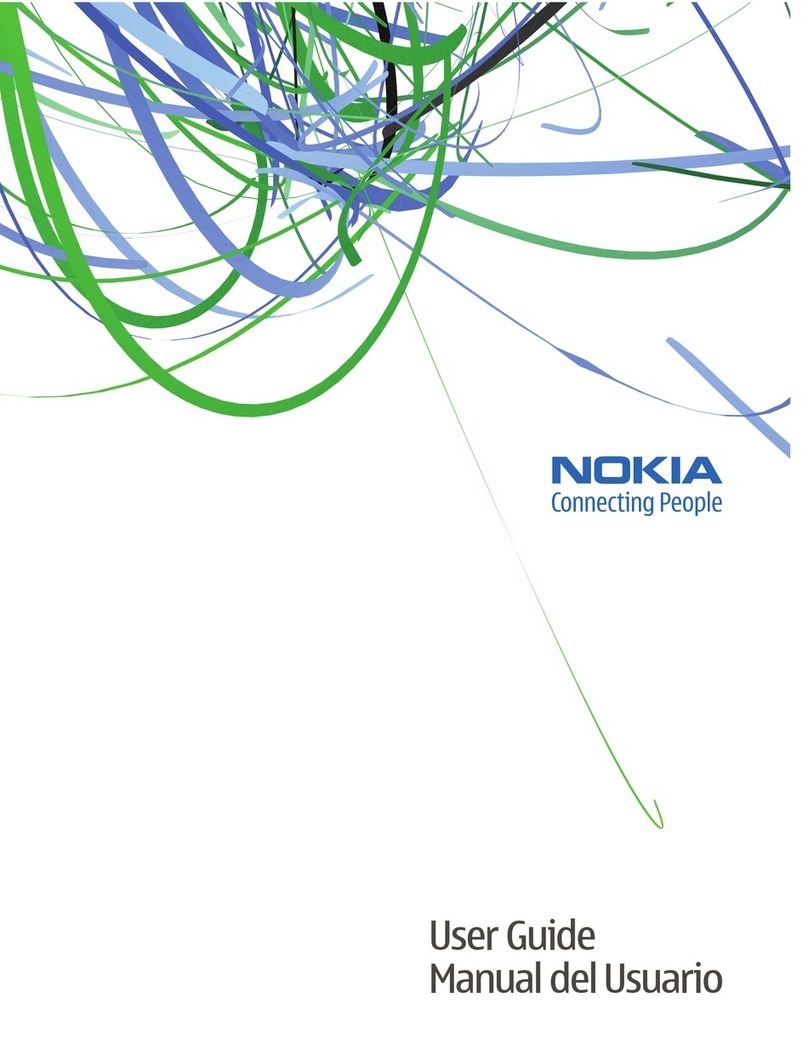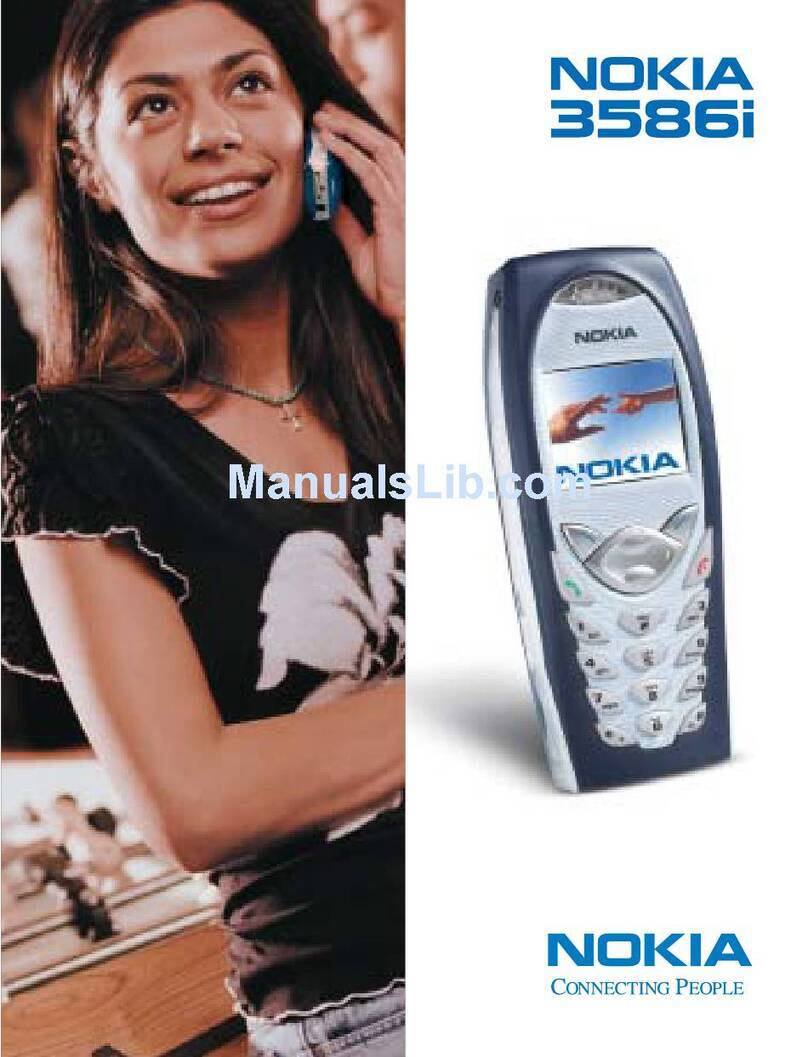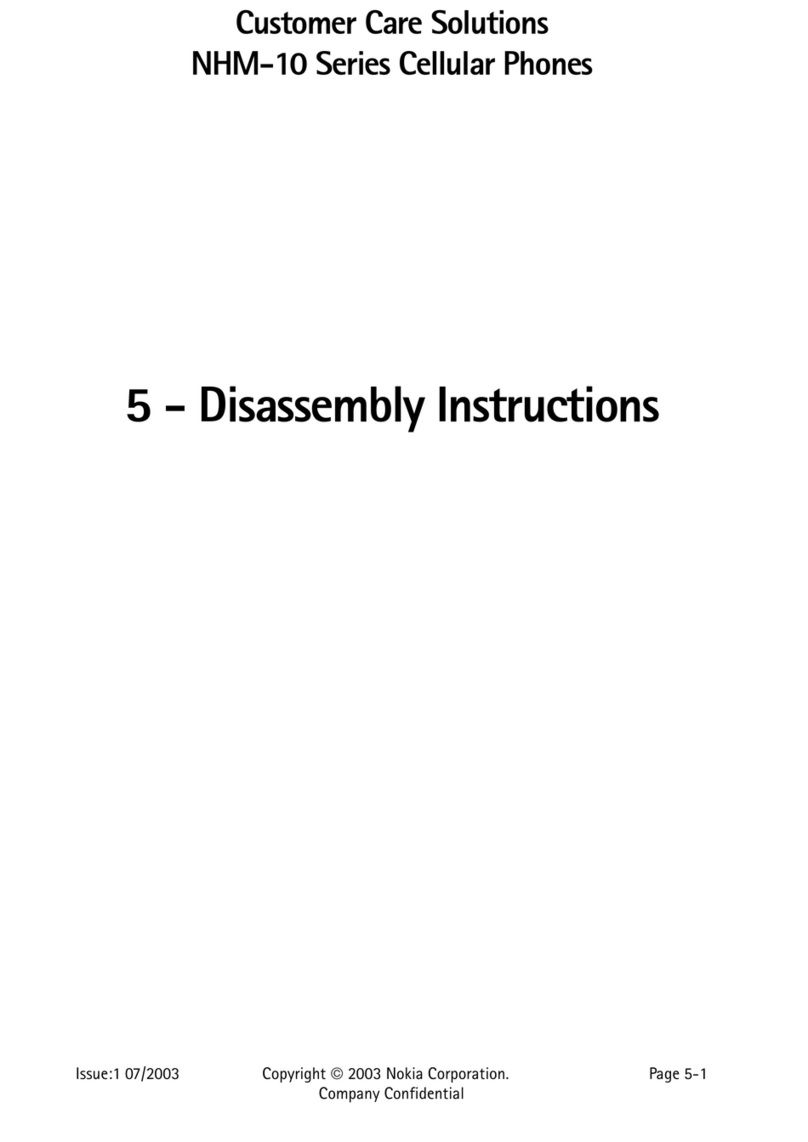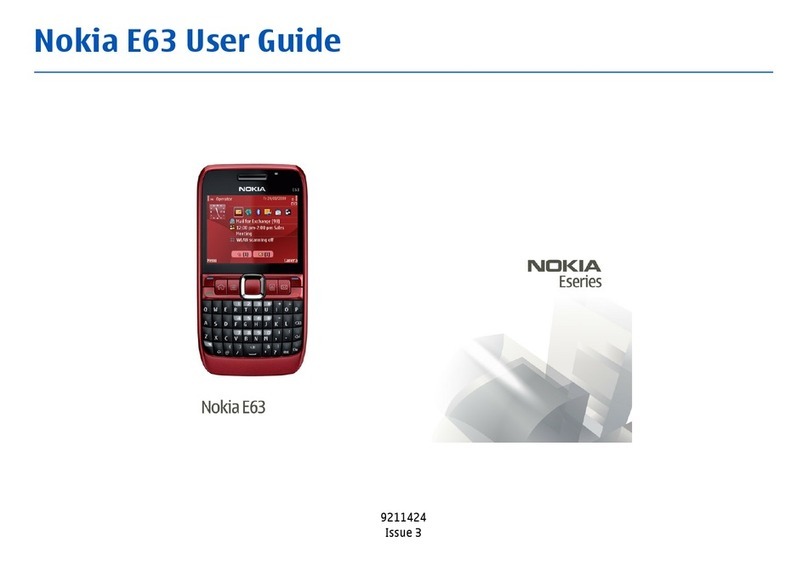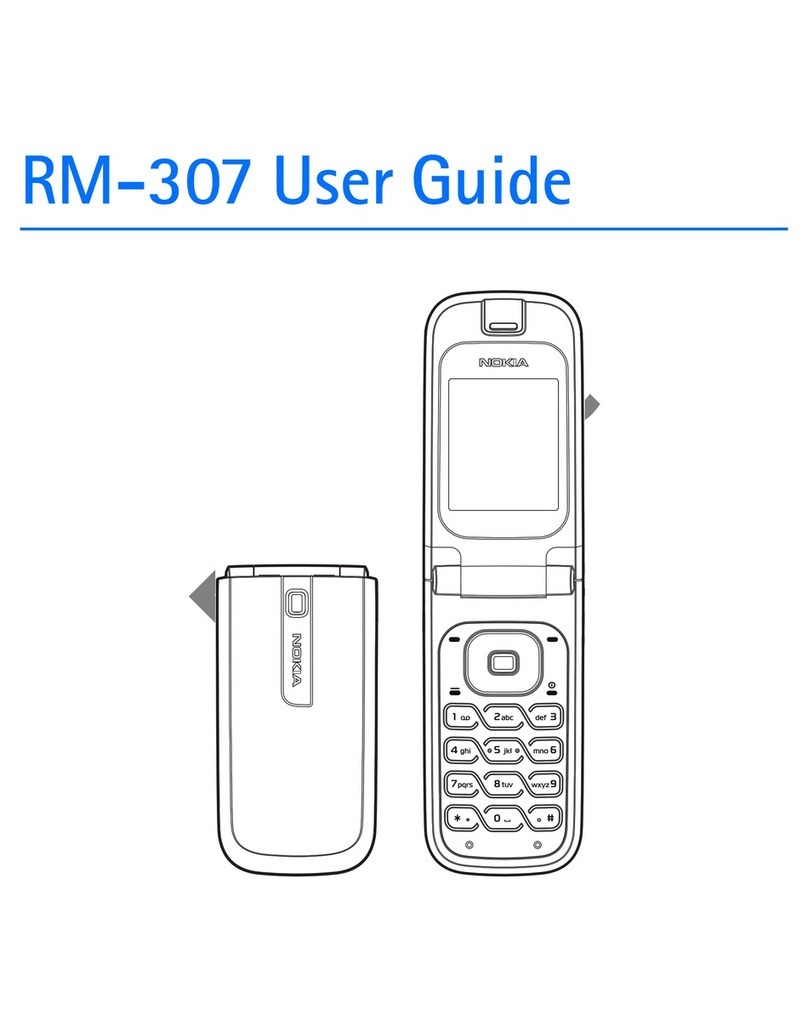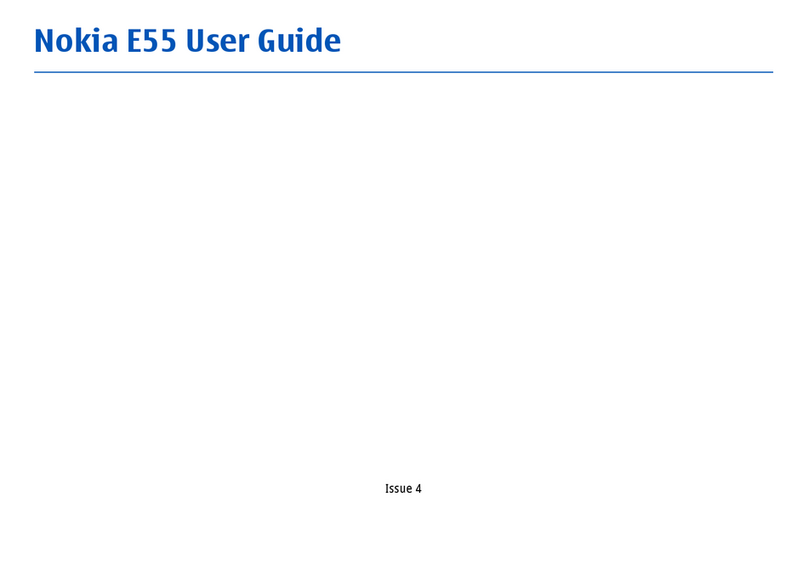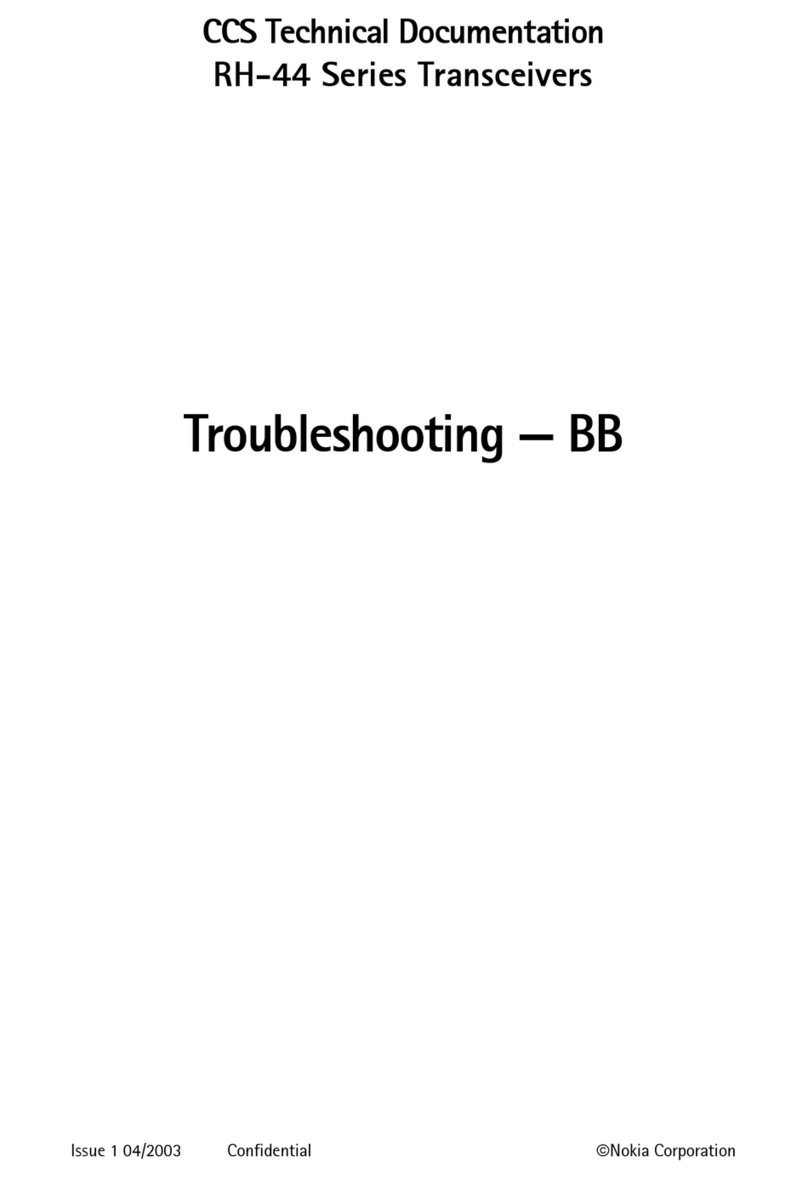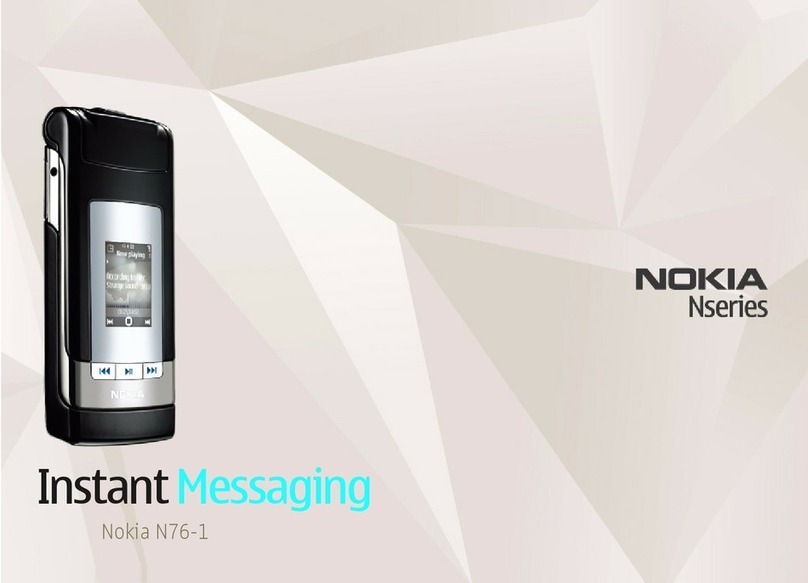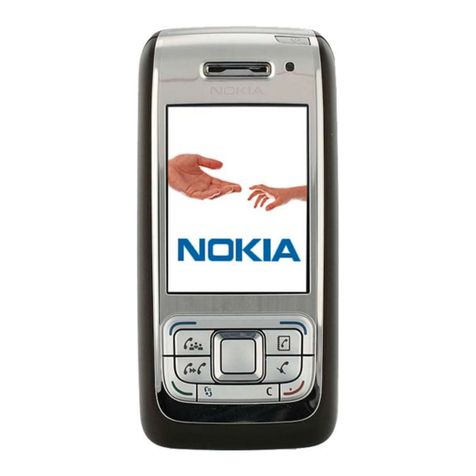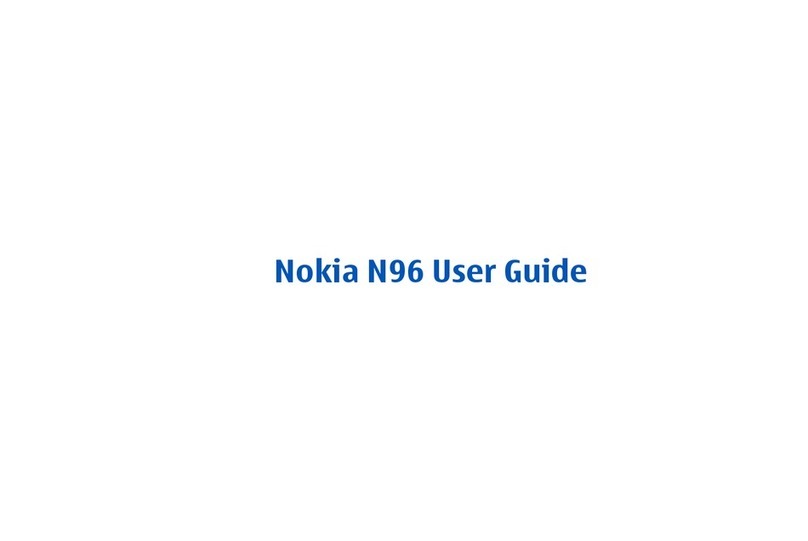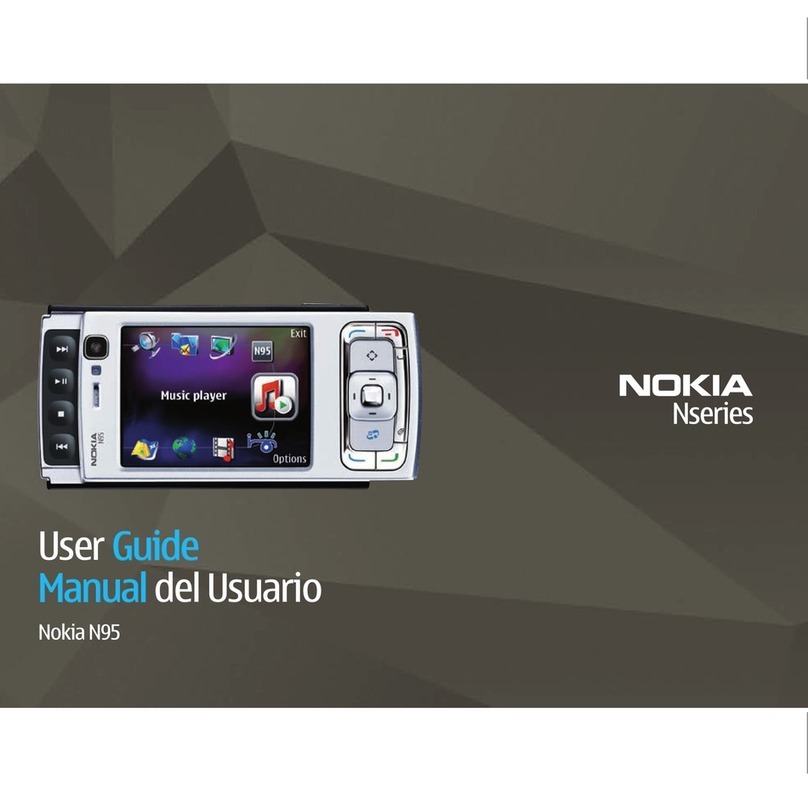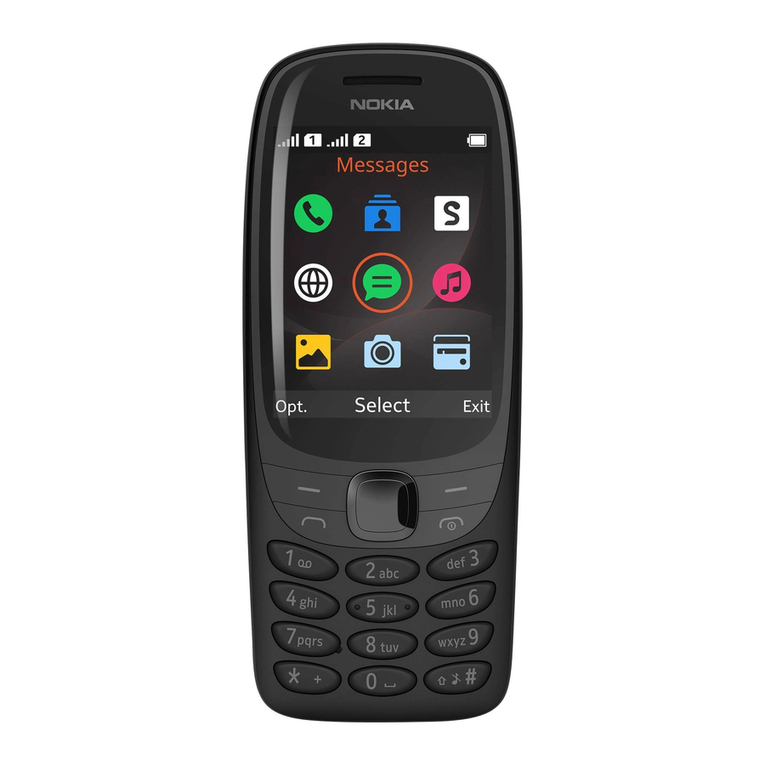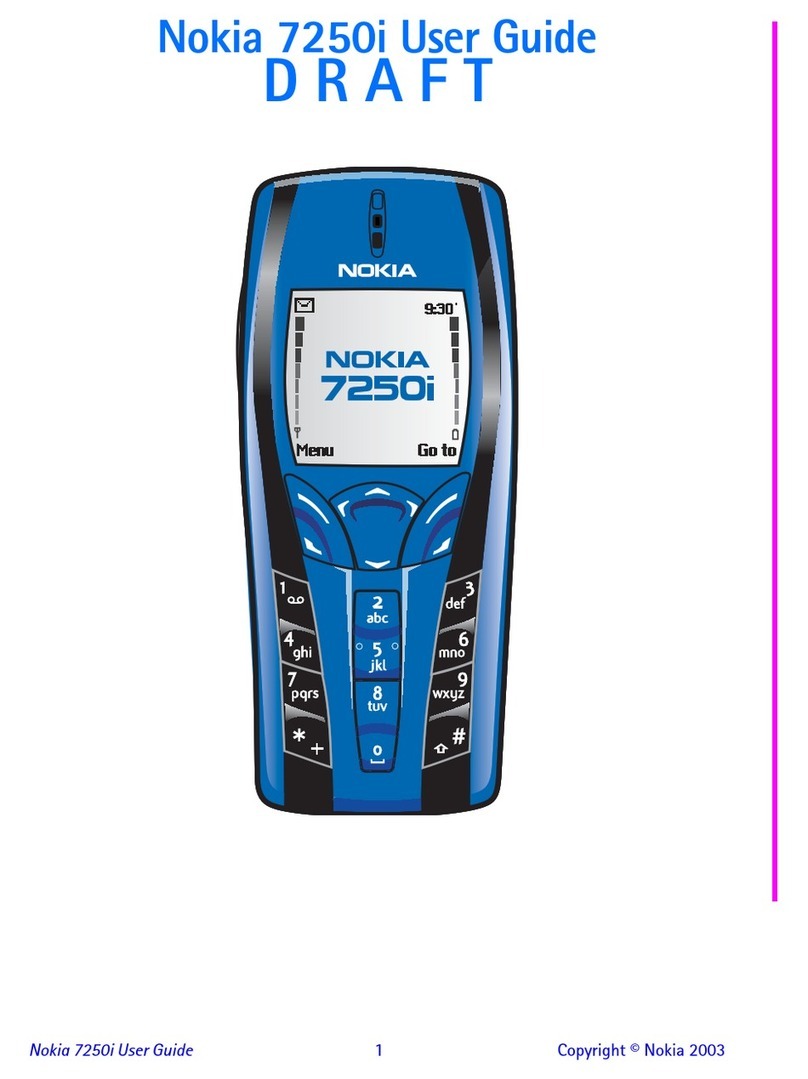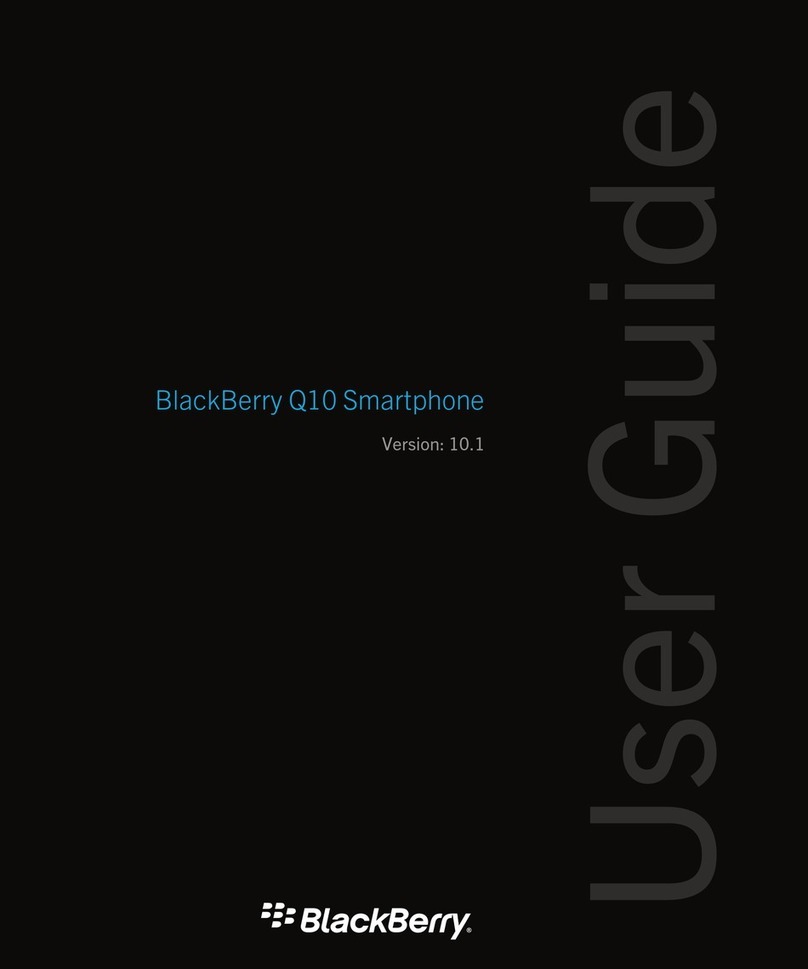
CCS Technical Documentation Troubleshooting — Antennas
RH-17
Issue 1 04/2003 Nokia Corporation Confidential Page 7
the radiator has a significantly different shape, then the correct internal antenna must
be installed. Be aware that the shape of the slot can vary slightly. The length of the hor-
izontal slot can vary by a few millimeters, because the antennas are tuned for each batch
of plastic frames. If there is any other obvious damage to the radiator (dents, corrosion),
then the antenna should be replaced. If the pin gets stuck or has excessive friction in the
plastic tube/guiding feature, then the spring will not work properly, and the antenna
should be replaced.
If the RF feed doesn’t touch the PWB, then the antenna gain will degrade by more than
25 dB. If the ground pin doesn’t touch the PWB, then the antenna gain may degrade
about 5 dB to 10 dB.
Wrong Internal Antenna Installed
Figure 6: Top and bottom view of RH-3 antenna
The RH-17 and RH-3 antennas share the same mechanical interface with the D-cover. As
a result, either antenna may be installed in either phone. The important differences visu-
ally in the antennas are that the slot pattern is very different, and there also is a GPS
antenna present in the RH-3 which is absent in the RH-17.
If the wrong antenna is installed, install the correct one.
Installing an RH-3 antenna in the RH-17 phone will change the antenna gain by a few
dB at 850 MHz, and the phone will not be compliant with FCC submission. Installing a
RH-17 antenna in a RH-3 phone will degrade the PCS performance by at least 6 dB, as
the RH-17 antenna is not tuned for PCS. In addition, if an RH-17 antenna is installed in
the RH-3, GPS will degrade by about 25 dB as the RH-17 doesn’t have a GPS antenna.
